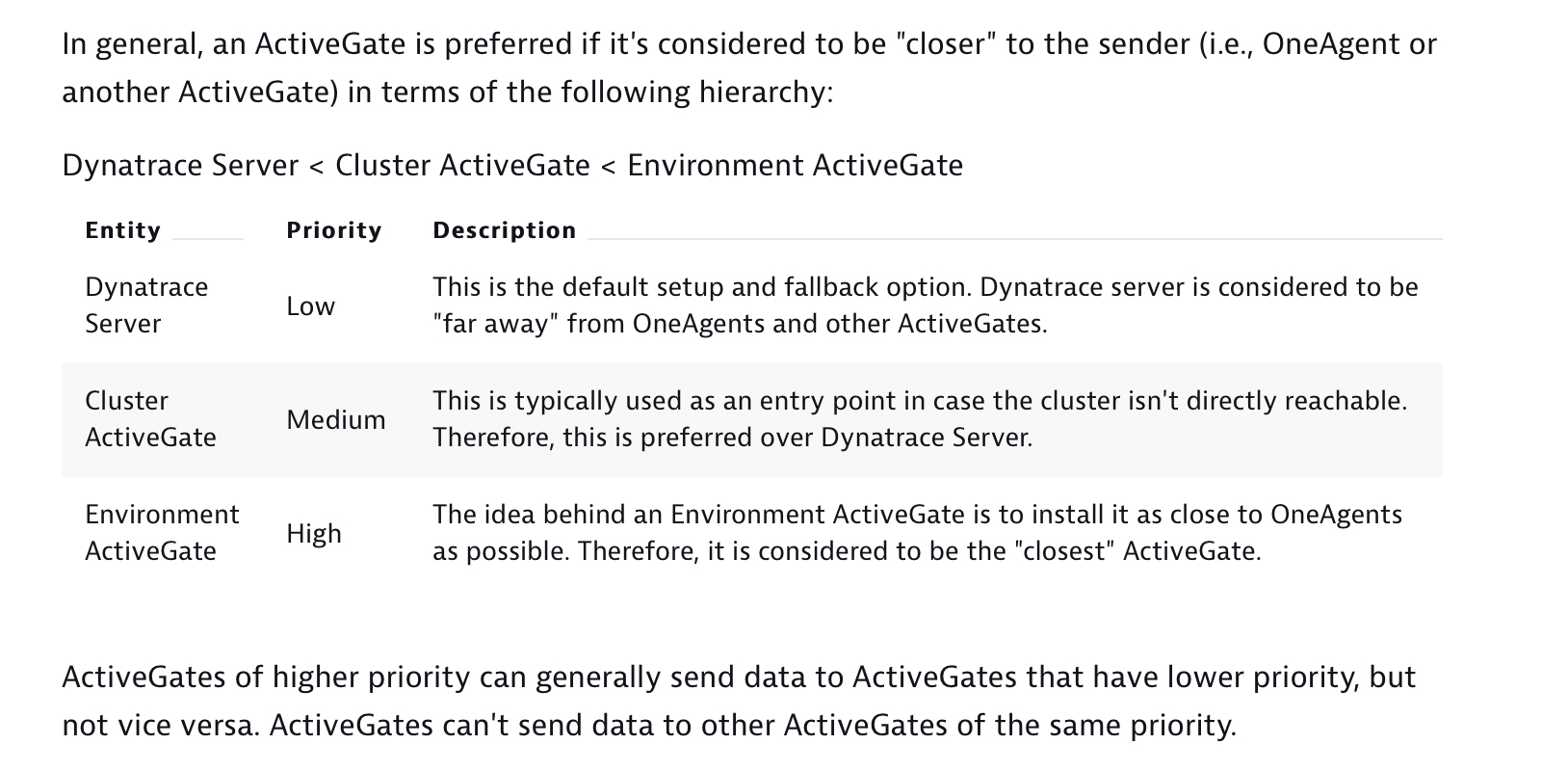- Dynatrace Community
- Ask
- Open Q&A
- Re: Is OneAgent selection of AG based on load and latency?
- Subscribe to RSS Feed
- Mark Topic as New
- Mark Topic as Read
- Pin this Topic for Current User
- Printer Friendly Page
- Mark as New
- Subscribe to RSS Feed
- Permalink
27 Feb 2020 01:37 PM
Describing how OneAgents determine which AG to connect to, the page at the link below states that "If more than one such ActiveGate is available, OneAgents will try to switch between the available ActiveGates on a regular basis to achieve proper load balancing."
I had previously thought (assumed) that the OneAgents would be checking network latency to the AGs and would pick the one with lowest latency (within AGs of a specific type, such as Environment AG). Is that not the case, or are BOTH load and latency taken into consideration?
Solved! Go to Solution.
- Labels:
-
activegate
-
documentation
-
oneagent
- Mark as New
- Subscribe to RSS Feed
- Permalink
27 Feb 2020 02:42 PM
As I know this is only based on AG load, not latency. When we are making deployments, group of agents has access via network to only one AG. If there are some extra considerations here I would be happy to get such informations as well 🙂
Sebastian
- Mark as New
- Subscribe to RSS Feed
- Permalink
27 Feb 2020 03:18 PM
If that is the case then my concern is that agents will often end up not connecting to the "local" AG (i.e., one in the same data center as the agent) but will instead be sending data to AGs that are located in other data centers... not very efficient from a network perspective
- Mark as New
- Subscribe to RSS Feed
- Permalink
27 Feb 2020 03:24 PM

According to this doc, OneAgent will prefer AG that is closer. In such case this shouldn’t be issue for you.
Sebastian
- Mark as New
- Subscribe to RSS Feed
- Permalink
27 Feb 2020 04:09 PM
I understand the hierarchy of preference between the Environment and Cluster AGs and of these over a direct connection to the cluster, but that view of closeness does not relate to the actual network distance.... so when we have multiple Environent AGs (as we do) the documentation does not appear to state that the one that is actually closest or has the least latency will be selected.
- Mark as New
- Subscribe to RSS Feed
- Permalink
27 Feb 2020 04:20 PM
Latency might be very volatile. I think balancing is only dependent on the number of connections or on amount of data.
- Mark as New
- Subscribe to RSS Feed
- Permalink
27 Feb 2020 04:32 PM
Perhaps, although I would think that there would often be significant differences between geographically remove sites... so it surprises me that the algorithm does not take that into consideration... But thanks for confirming that it is based on load (connections & traffic volumes) only.
Featured Posts
